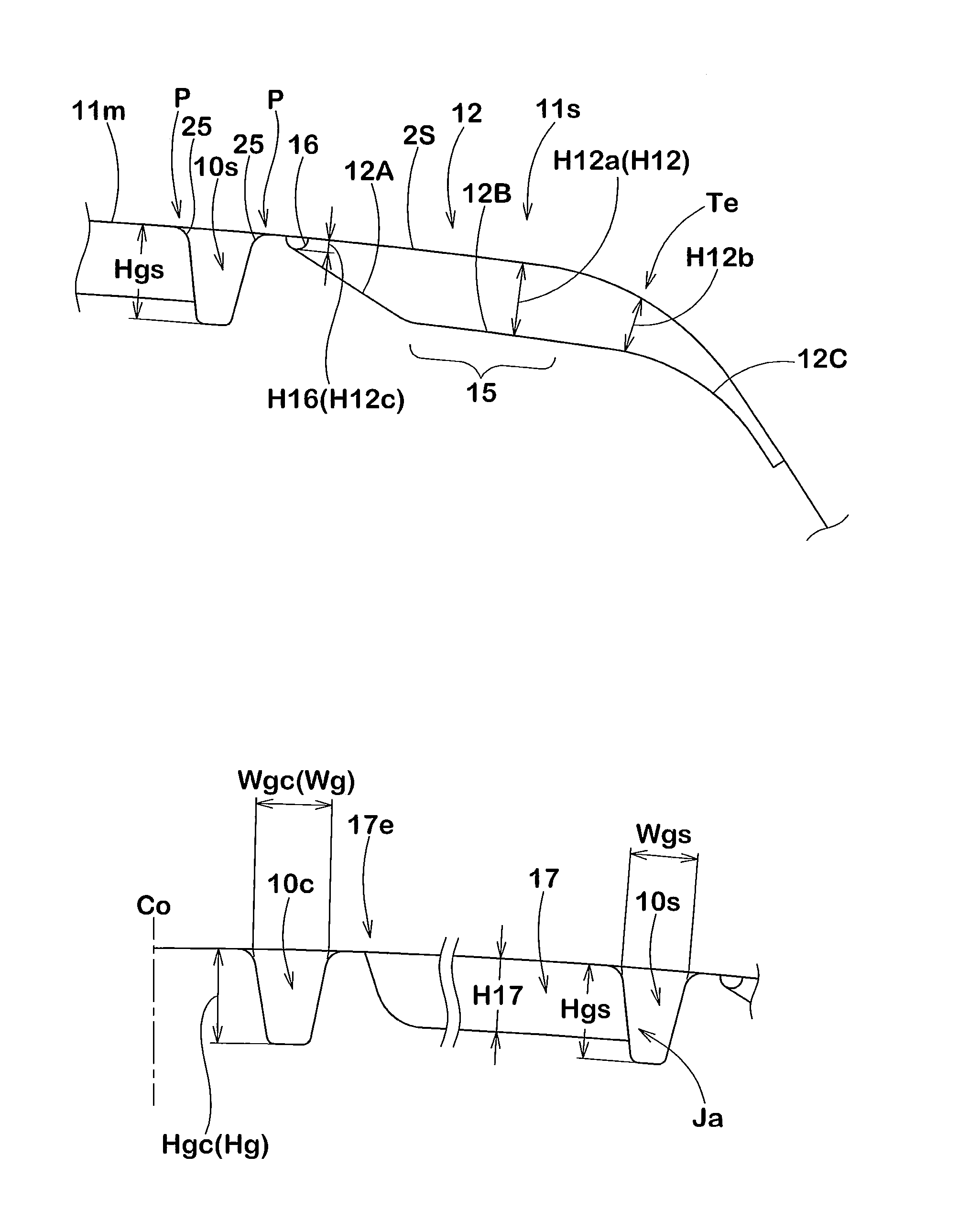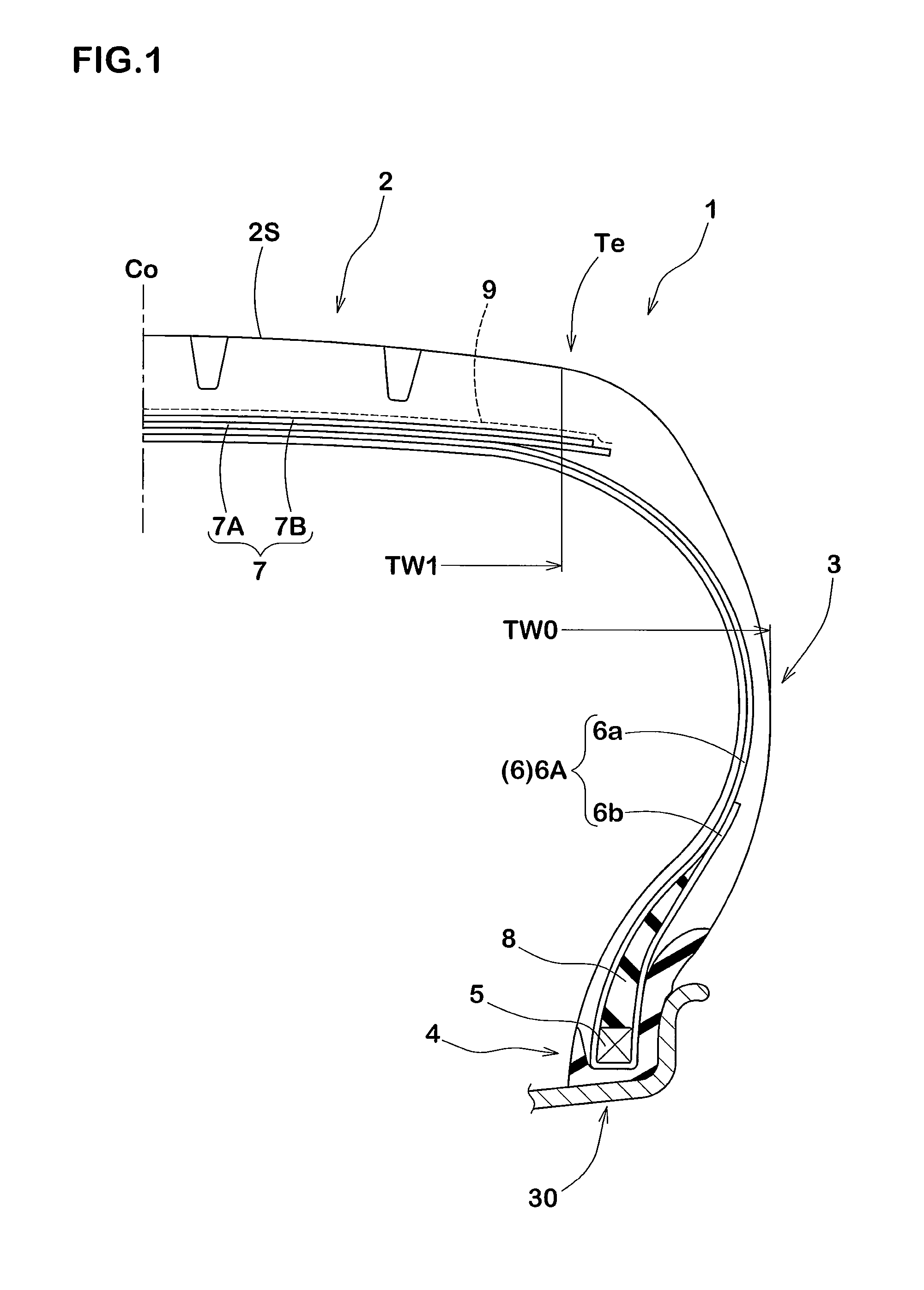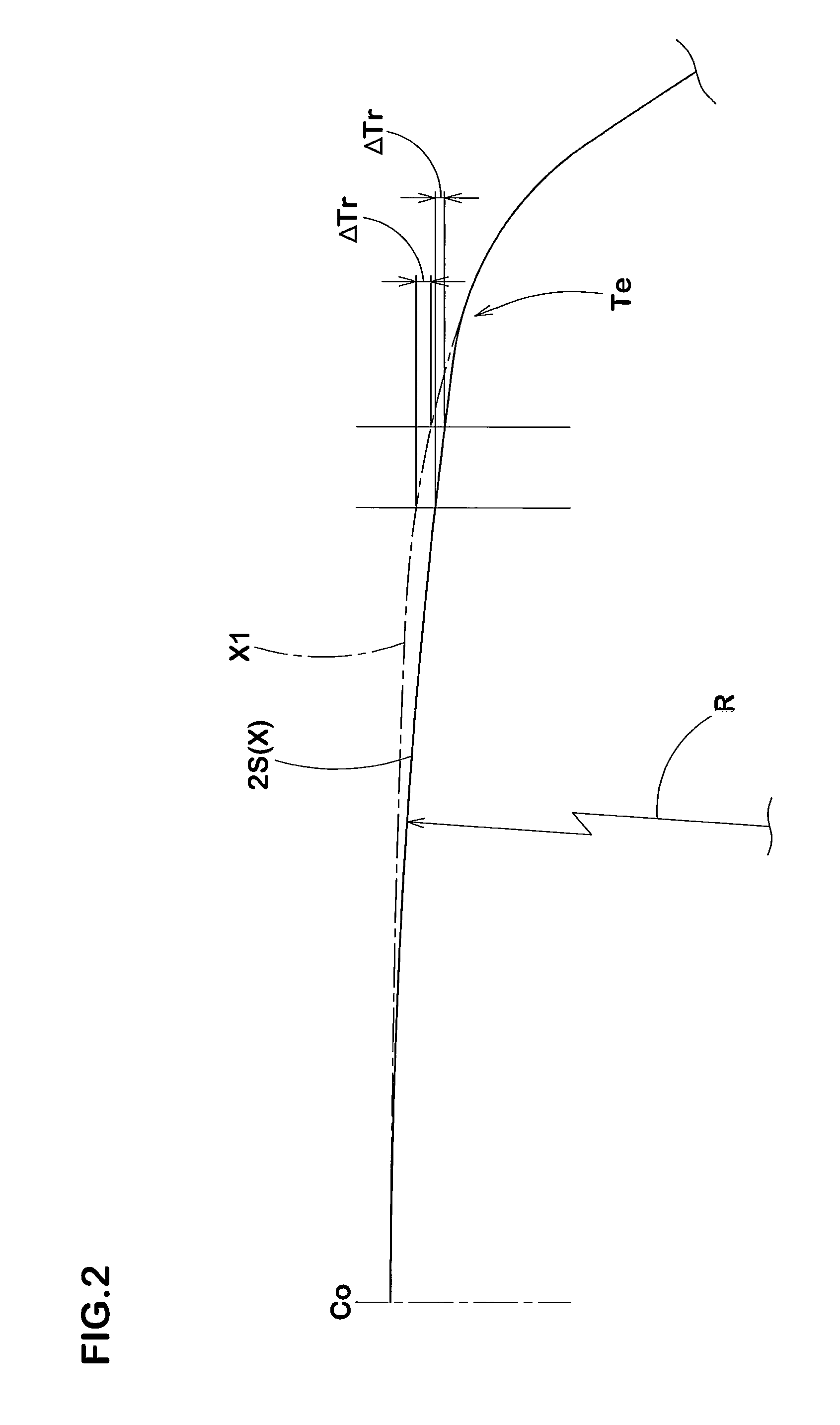Pneumatic tire
a technology of pneumatic tires and lateral grooves, which is applied in the field of pneumatic tires, can solve the problems of increasing the amount of slippage on the road surface, the wear speed of the shoulder portion sh is relatively fast, and the lateral grooves to be arranged on the shoulder portion are worn out early, so as to reduce the amount of slippage, and increase the rigidity of the entire shoulder land portion and the corner portion
- Summary
- Abstract
- Description
- Claims
- Application Information
AI Technical Summary
Benefits of technology
Problems solved by technology
Method used
Image
Examples
examples
[0057]Radial tires of size 195 / 65R15 for passenger cars were prototyped with the tread pattern shown in FIG. 1 as a standard pattern based on the specifications in Table 1, and noise performance and early wear performance of respective sample tires were tested. Each tire has substantially same specifications, except for anything listed in Table 1. Shown below are common specifications.
[0058]Crown Circumferential Main Grooves
[0059]Groove width Wgc—10.5 mm
[0060]Groove depth Hgc—8.2 mm
[0061]Shoulder Circumferential Main Grooves
[0062]Groove width wgs—8.2 mm
[0063]Groove depth Hgs—8.2 mm
[0064]Shoulder Lateral Grooves
[0065]Groove width W12—3.0 mm
[0066]Groove depth (maximum value)—Table 1
[0067]Middle Inclined Grooves
[0068]Groove width w17—4.5 mm
[0069]Groove depth (maximum value) H17—6.7 mm
[0070]Crown Lateral Grooves
[0071]Groove width w20—0.8 mm
[0072]Groove depth (maximum value) H20—4.0 mm
[0073]The sample tires were mounted on all wheels of the vehicle (displacement of 2000 cc) under the con...
PUM
 Login to View More
Login to View More Abstract
Description
Claims
Application Information
 Login to View More
Login to View More - R&D
- Intellectual Property
- Life Sciences
- Materials
- Tech Scout
- Unparalleled Data Quality
- Higher Quality Content
- 60% Fewer Hallucinations
Browse by: Latest US Patents, China's latest patents, Technical Efficacy Thesaurus, Application Domain, Technology Topic, Popular Technical Reports.
© 2025 PatSnap. All rights reserved.Legal|Privacy policy|Modern Slavery Act Transparency Statement|Sitemap|About US| Contact US: help@patsnap.com



